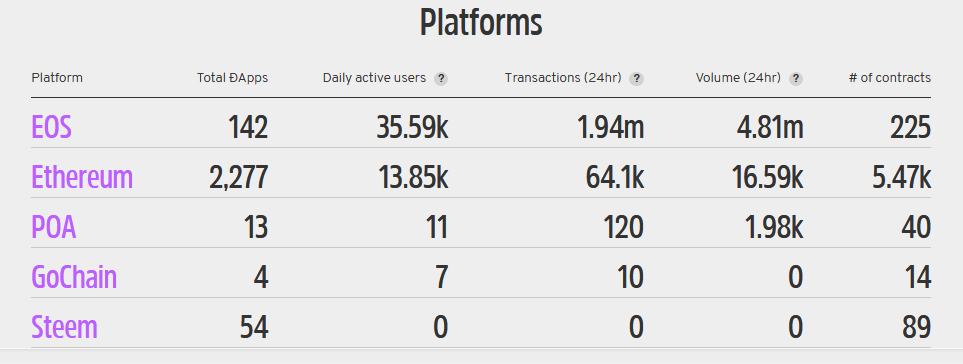For most of the “second-wave” era of the cryptocurrency and blockchain technology narrative, Ethereum held sway in the decentralized application (dApp) niche. The platform deviated from many of the “first-wave” projects that sought to replicate the Bitcoin playbook.
Ethereum, instead looked to create a blockchain platform upon which developers could run dApps targeted at a myriad of market segments. It didn’t take long for other developers, citing perceived weaknesses in the Ethereum protocol to create competing projects. This move gave rise to projects like EOS, NEO, and TRON among others, seeking to become the “Ethereum killer.” These projects aspire to become the foundation on which developers create decentralized applications (dApps) that blockchain enthusiasts say will soon dominate the Internet. With 2019 still in the early stages, here’s a look at how the battle for platform supremacy is going.
Moving Beyond Ethereum’s First Mover Advantage
For EOS and TRON, the goal is to move beyond Ethereum’s first mover advantage. Of the top 100 coins based on market capitalization, 94 are built on the Ethereum protocol. By being first on the scene, Ethereum enjoyed the benefits that came with the ICO boom of 2017.
According to State of the dApps, a platform that tracks decentralized applications, of the 2,432 total dApps, 2,277 run on the Ethereum platform. EOS by comparison only hosts 142 of such applications.
How does a project like EOS or TRON come out of Ethereum’s shadow? For EOS, dominance might occur in the way of the decentralized exchange (DEX) arena.
Monopolizing the DEX Arena
Centralized exchanges like Coinbase, Binance and the likes make up for the bulk of cryptocurrency trading activities. According to Token Insight, a blockchain research firm, these platforms account for 99.02 percent of cryptocurrency trades. By focusing on providing faster transaction capabilities, EOS plans to position itself as the preferred platform for DEX services. Presently, Ethereum’s block creation speed is something like 14 seconds per block. This speed isn’t enough for DEX services to compete with centralized exchanges. EOS, on the other hand, creates blocks at a speed of 0.5 seconds per block. It is, therefore, no surprise to see newer DEX platforms like Newdex electing to run on EOS. EOSIO even launched an update to its platform, increasing speed by 35 percent. TRON is perhaps the outsider in the argument for who will win the platform war. Notable Computer Science professor and blockchain technology expert, Emin Gün Sirer recently debunked TRON’s claim of being one of the largest operating systems in the world.
While the race for who will become the dominant dApp platform continues, Bitcoin might be getting a new challenger. Researchers from prominent Universities in the United States are trying to create a new cryptocurrency that offers faster transactions than Bitcoin. Dubbed Unit-e, the researchers say the proposed cryptocurrency will be able to process up to 10,000 transactions per second. This speed is vastly superior to Bitcoin’s current seven transactions per second. The jury is still out on whether Unit-e stands any chance of challenging Bitcoin’s dominance in the cryptocurrency payments arena. Who do you think will win the race to become the de facto dApps platform?
Image courtesy of Stateofthedapps.com

